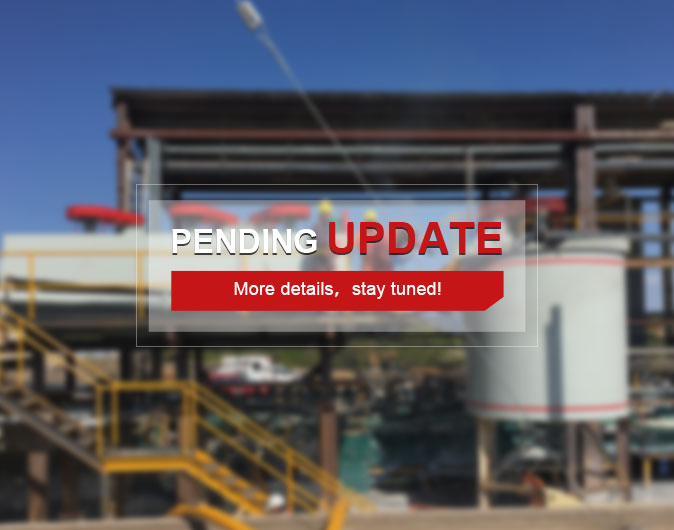
Gansu Tianluo 500 tpd lead-zinc mineral processing plant is an EPCM+O project undertaken by Xinhai, which is solely undertaken by Xinhai from design and research, manufacturing and procurement of complete sets of equipment, commissioning and delivery to mine management and operation.
The stage of crushing and screening: Used the process of two-stage and one closed-circuit crushing and screening. The raw ore was stored in ore yard, and loaded with a forklift truck. An electromagnetic vibrating feeder was installed at the bottom of the primarybin, and a jaw crusher was used for coarse crushing. After coarse crushing, the materials were transported to the circular vibrating screen by the 1# belt conveyor for screening, and the material on the screen was transported by the 2# belt conveyor to the cone crusher for fine crushing. The finely crushed and the coarsely crushed products were transported back to the vibrating screen together to form a closed-circuit crushing. The materials under the screen were the qualified in the crushing stage and were directly put into the powder ore bin.
The stage of grinding and grading: Used the process of one-stage closed-circuit grinding + lead flotation - zinc flotation. A pendulum feeder, installed at the bottom of the powder ore bin, sent materials to the overflow ball mill by the belt conveyor. The discharging was pumped into a hydrocyclone for grading, and the underflow was back to the ball mill for regrinding, forming the process of a closed-circuit grinding.
The overflow from the hydrocyclone flowed into a pump agitation tank with reagents and size mixing, and was entered into the BF-2.8 flotation cell for roughing of lead flotation. The roughing tailings entered to two scavenging in sequence and the scavenging II was lead flotation tailings. The concentrate from scavenging II was returned to scavenging I, and the concentrate from scavenging I was returned to roughing. The BF-2.8 flotation cell was used in the two stages of scavenging. The roughing concentrate was entered into three stages of concentration, and concentrates from concentration III were lead concentrates. The tailings from concentration III were returned to concentration II, tailings from concentration I were returned to concentration I, and tailings from concentration I were returned to roughing, forming the flotation process of a one-roughing, two-scavenging, three-concentration closed-circuit.
Lead flotation tailings flowed into a lifting agitation tank with reagents and size mixing, and was entered into the BF-4 flotation cell for zinc roughing. The roughing tailings entered to the BF-4 flotation cell in sequence for three stages of scavenging. The tailings from scavenging III were zinc flotation tailings which were pumped into tailings pond. The concentrate from scavenging III was returned to scavenging II, the roughing from scavenging II was returned to scavenging I, and the concentrate from scavenging I was returned to roughing. The roughing concentrate was entered into two stages of zinc concentration, and the concentrate from concentration II was zinc concentrate. The tailings from concentration II were returned to concentration I, and tailings from concentration I were returned to roughing, forming the zinc flotation process of a one-roughing, three-scavenging, two-concentration closed-circuit.
The stage of concentrate dehydration: Used the mechanical dehydration. The flotation lead concentrate was pumped into the high-efficiency modified thickener, the underflow was pumped into the inside-out filter for filtration, and the filter cake was transported by the belt conveyor to the concentrate storage. The flotation zinc concentrate was pumped into the high-efficiency modified thickener, the underflow was pumped into the plate-and-frame filter press, and the filter cake was transported by the belt conveyor to the concentrate storage. The overflow from the thickener and the filtrate from the filter press during the the lead and zinc concentrate dehydration process were returned to the system as a backwater for recycling.
Please leave your message here! We will send detail technical info and quotation to you!
© 2020 Shandong Xinhai Mining Technology & Equipment Inc.
